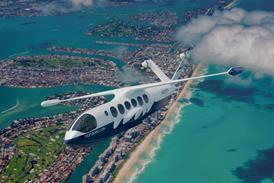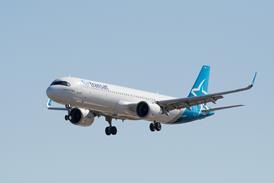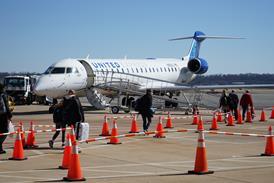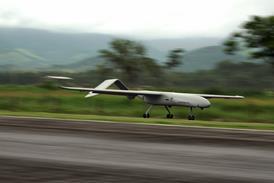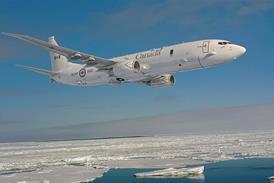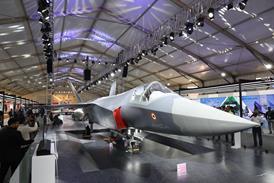Korean authorities have listed recurrent training for multiple engine shutdown, as well as bird-strike response procedures, among safety improvements planned in the aftermath of the fatal Jeju Air Boeing 737-800 crash.
While the inquiry has yet to reach conclusion over the 29 December accident, the Korean transport ministry ordered a sweeping safety review of airline operations and airport facilities.
The 737’s crew had been conducting a second landing attempt at Muan airport – in the opposite direction to the initial approach, and with its landing-gear raised – when the jet overran and collided with a mounted localiser antenna.
Six airlines operating 737-800s have been inspected in the two week since the accident, including Jeju Air, Korean Air, Air Incheon, Eastar Jet, Jin Air and T’way Air. The ministry has also inspected navigation systems at 13 airports.
The airline inspection has focused on maintenance history, procedural compliance and servicing records for major systems including engines and landing-gear.
According to the ministry some airlines – it has not identified which – were found to be exceeding pre-and post-flight inspection times, or failing to comply with certain procedures to remedy defects, such as the replacement of filters after indications of hydraulic system electric pump overheat.
But it states that the national airline was complying overall with operating and maintenance regulations.
The ministry says, however, that it plans “major improvements” in operational safety aspects such as incorporation of shutdown training for two or more engines, and the inclusion of bird-strike response in pre-flight briefings.
It has not indicated whether these changes are directly linked to the circumstances of the Jeju 737 crash.

The presence of Muan airport’s raised localiser antenna, with which the aircraft collided at high speed, has also generated concern within the ministry.
Its inspections have looked at design and installation of localisers and glideslope antennas, as well as DME and VOR navigation beacons.
These examinations found that the facilities were “well maintained” and that “most” incorporated “sufficient safety” such as the use of frangible materials in construction.
But nine installations across seven airports were found to have concrete foundations or platforms, with Gimhae, Jeju, Sacheon, Gwangju, Yeosu, Pohang Gyeongju among the affected locations, along with Muan.
The inspections show that “improvement is necessary” at these airports, says the ministry.
It says further inspections will be conducted, and improvement measures drawn up during January with the aim of completing them within the year.
While acknowledging public concern over the construction of the Muan localiser, the ministry had pointed out that it complied with Korean airport legislation, because frangible installations only applied to those located within the runway and its safety end-zone – whereas the Muan localiser was outside of this area.
Regulations governing installation of navigation facilities, it adds, only stipulate the frequency and signal strength of localisers, and not the height or material of the antenna support structure.
But the ministry has vowed to “rapidly” improve such structures “regardless of compliance”, and review the “extensive” and “complex” standards relating to airport facilities in order to resolve any confusion in interpretation.

